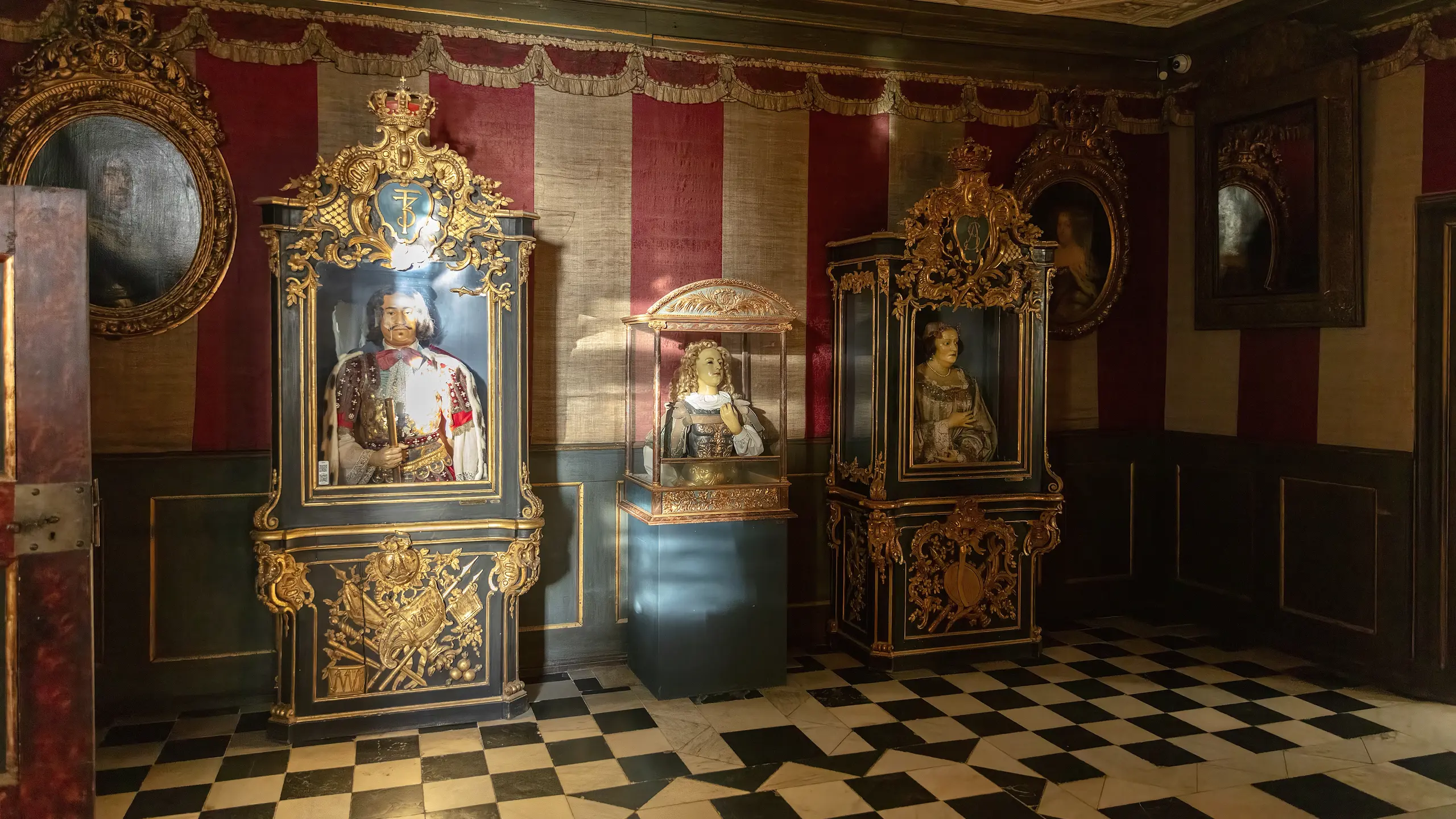The Dark Room (room 4)
The Dark Room has been as dark as it is now since 1616, when the Great Tower was added to Rosenborg. After the tower was built, the room no longer received direct daylight.

From anteroom to shared bedroom
This room was originally connected to the Stone Corridor and served as an anteroom separating the King's chambers at one end of the castle from the Queen's chambers at the south end. In 1705, it was converted into a shared bedroom for Frederik IV and Queen Louise.
The stucco ceiling in the room dates back to the time when the castle was built and was crafted by Valentin Dresler from Schmalkalden. The fireplace with the mirror above and the silk tapestries were added while Frederik IV used the castle.
Objects in the room
If you are at the museum, you can admire the fascinating objects in the room and read more about them below.
The descriptions are brief and generally do not include images. They are intended as an added resource if you would like more detailed information about an item, such as who made it, its origin and its meaning.
